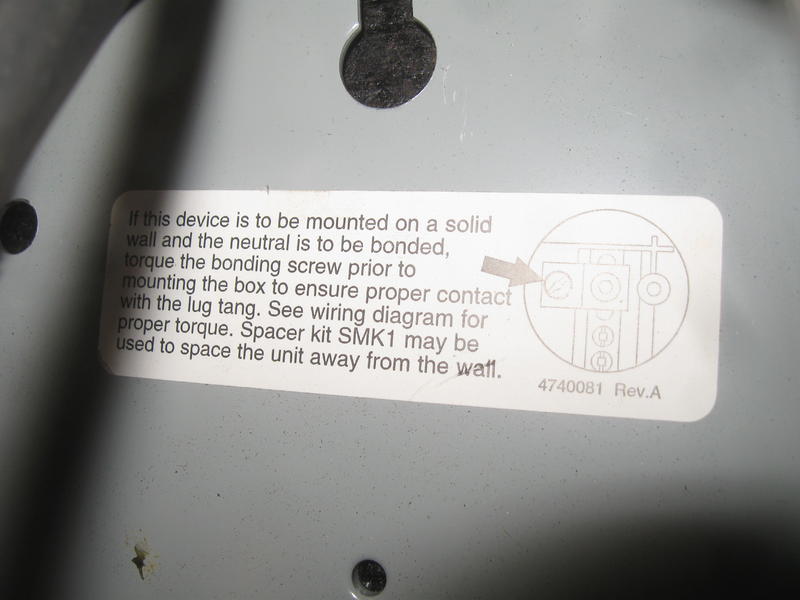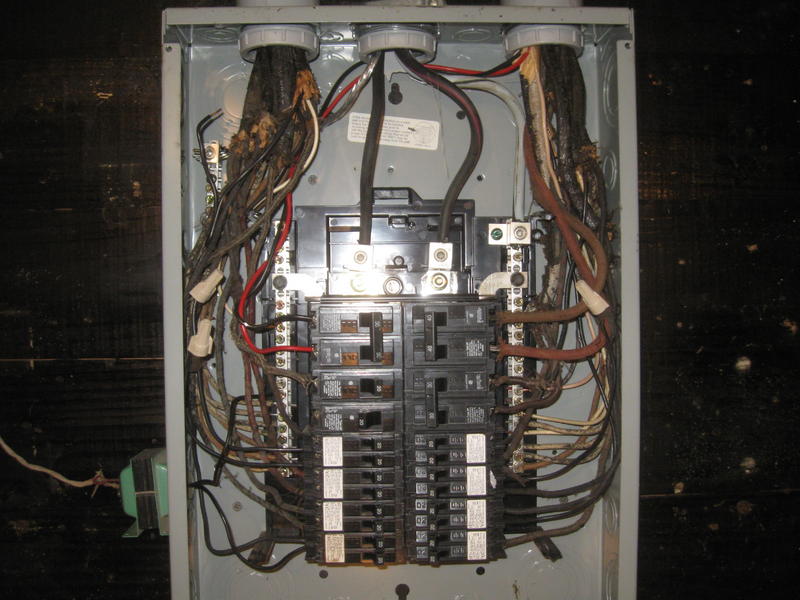This was a recently installed/updated electrical service, exterior service equipment, and a distribution panel (as seen here). My dilema is that there was a green bonding screw installed, however, the label inside the panel confused me a bit. The screw was not installed all the way, as you can see in the last pic. Everything else seemed to be professionally installed and correct, however, this bonding screw set up has me a bit perplexed. I know that the neutral is not supposed to be bonded, but is it? Any helpful insight would be greatly appreciated. Thanks in advance.
Newer panels have labels that say “bond when required”.
You would have to know the length of that screw to know for sure if is not touching, it sure looks like someone tried to do it right but should have removed the screw so someone would not “fix it” by tightening it.
The screw should be removed completely. . .
Joshua,
That label is for “When” the neutral “Grounded” conductor is to be bonded to the enclosure. In your case based on what you have told us your assumption is correct and the bonding screw needs to be removed. However, you do need to verify the EGC is actually connected to the panel enclosure so you ensure they at least have a low impedance fault current path.
So when would you know that the green screw needed to be kept in place?
When it is a main panelboard or in a remote distribution panel that is using that specific buss only for grounding purposes and the “grounded” buss bar is isolated as it should be on a remote distribution panel.
Understand that the “GREEN” screw is but only one method. It can be used in a main distrubution panel for bonding the common grounded and grounding terminal bar to the enclosure which is a common practice or in a remote distribution panel ( some call Sub-panel) where you have a seperate “grounding” buss bar which is for the “EGC” Equipment Grounding Conductors" to terminate. You may see a panel with a tie bar that once removed seperates two different buss bars. If that were the case, the one side with the green bonding screw is for “EGC’s” only and the other is for the “Grounded” conductors ( ie: in your case true neutrals when dealing with typical home inspections ).
Hope this is helpful…
Paul those conductors look like regular neutrals in this case.
I was refering to the question posed by Richard Only.
The Siemens boxes come from the factory that way. If you need to leave it unbonded, you simply leave it as is (the way it is in your photo), If it needs to be bonded, you screw it in. The screw itself is “upset” on the end similar to the terminal screws on switches and receptacles to help prevent it from being removed completely or falling out. It is a good idea, because many times the bonding screw gets lost, and people substitute any old screw, which is obviously wrong. I learned early on that the first thing you do when you take a panel out of the box to install it is to put in the bonding screw (if needed.)
In my opinion, Siemens came up with a good way to “stupid proof” a small portion of the install.
Personally as a rule…If the bonding screw was not going to be used in a given install then it would be removed. Unless, the screw itself was going to be used to actually bond a terminal bar to the case then the best way to “stupid proof” the installation is to remove it. Now, like I said before;it may be something needed if the design of the panel can still use that specific terminal bar for the “grounding” purposes…otherwise the best course of action I teach young electricians is remove it if their is any possible chance of an improper case to neutral connection down the road.







